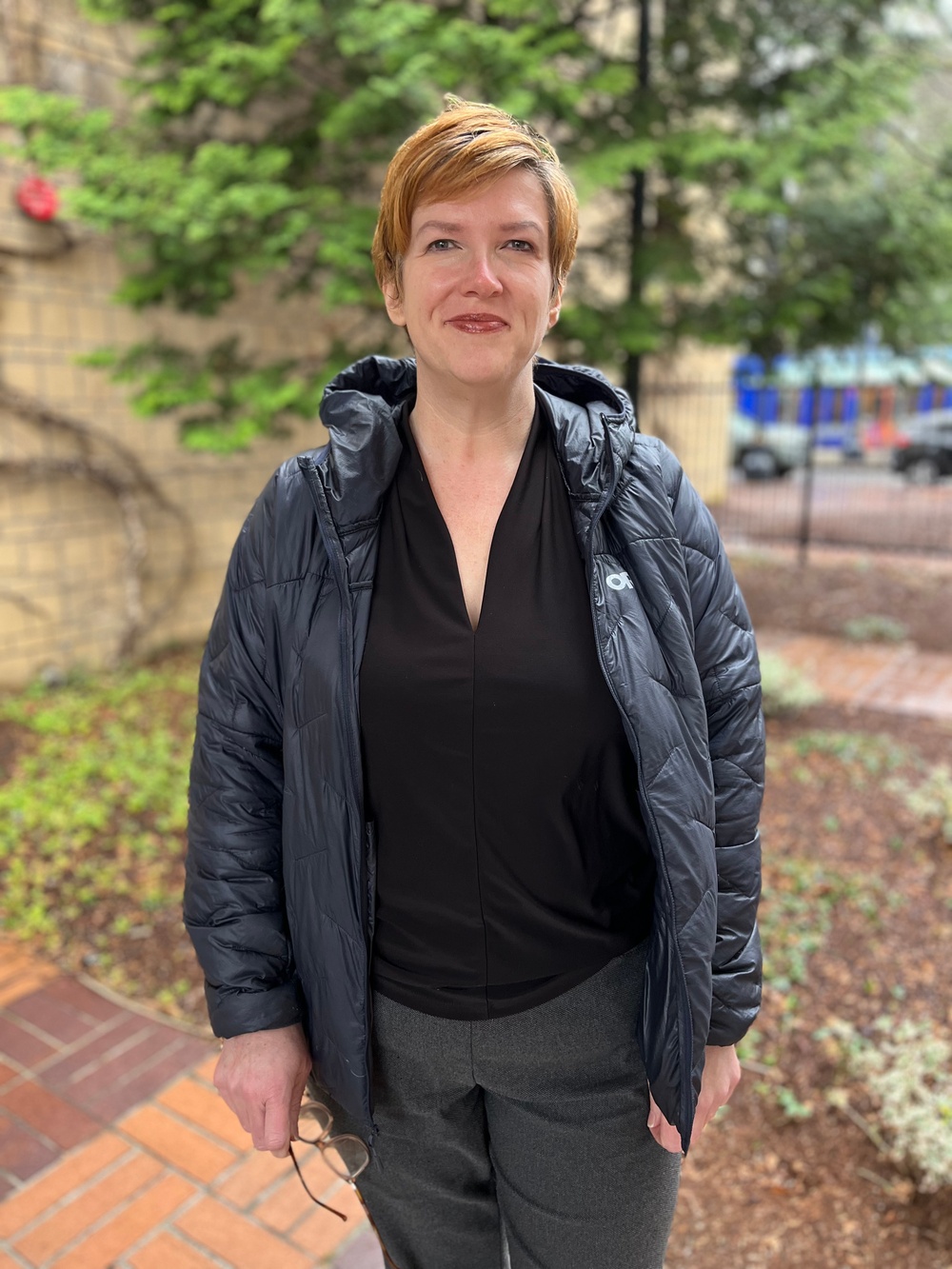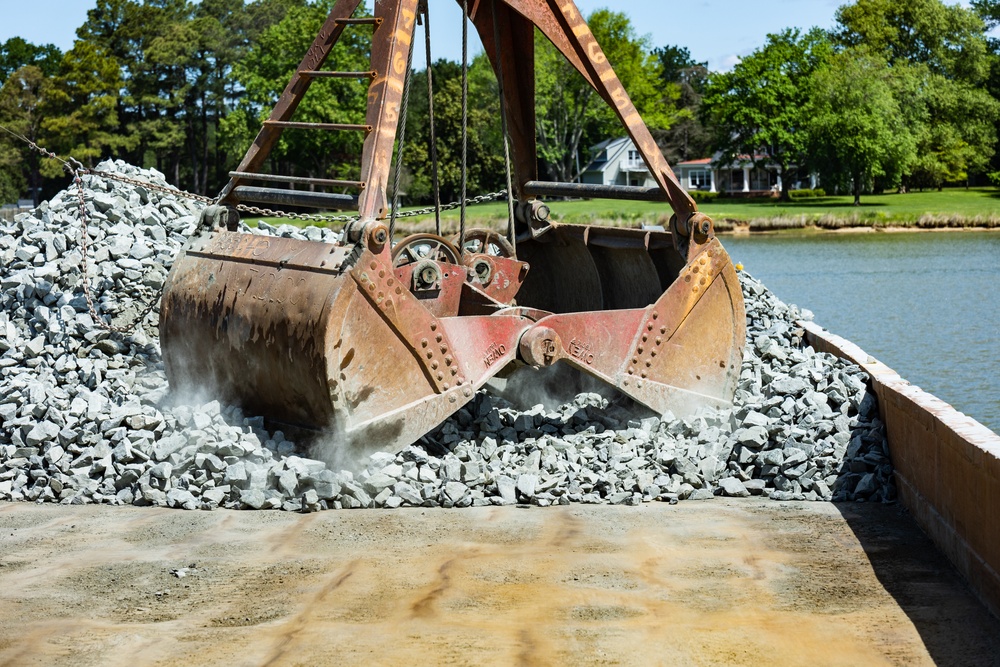DVIDS – News – Coast Guard Academy cadets help to save right whales
Right whales are dying.
Only around 430 right whales remain.
Scientists predict that right whales will be extinct by 2040.
In the last two years, 35 right whales were found dead, with only five new calves being born in the 2016 to 2017 birthing season.
Throughout the 2017 to 2018 birthing season no calves have been seen leading scientists to state that there are no new right whales.
With the whales diminishing, two Coast Guard Academy cadets have stepped up to do the right thing and help save the whales.
First Class Cadets Ainsley Fruhwirth and Zoe Bolling, both marine science majors at the Academy have spent the last two years working on saving the right whales as part of their capstone research project.
Titled, “Detection and Avoidance of the Right Whales along the Northern Coast of the United States,” their project breaks down the right whale fatalities due to ship collision and implements a way to give mariners a current location of right whales in their area using technology.
“I love whales and all marine life,” said Fruhwirth on why she chose this project. “This project will have a real world impact.”
The North Atlantic right whale is a baleen whale, one of three right whale species. Because of their docile nature, slow surface-skimming feeding behaviors, their tendencies to stay close to the coast, and their high blubber content, which makes them float when they are killed, right whales were once a preferred target for whalers. In fact, the whales earned their name from hunters as being the “right” whale to hunt.
Before the 1930s, hunting dwindled the right whale population.
Today, the majority cause of right whale deaths are from being caught in fishing gear or struck by boats.
The Coast Guard, along with other federal, state and private organizations have been working together to help the whales for years.
The Coast Guard’s legacy of environmental protection dates back to the late 1800s with the signing of the Fur Seal Act of 1897, charging the Coast Guard with the vital role of enforcing natural resource laws.
“The Coast Guard is doing its part to help,” said Bolling. “However, we can do more. Humans are the reason for the loss of the whales and humans can fix it.”
Bolling and Fruhwirth started their project by compiling years of research on the right whales, which they received from the National Oceanic and Atmospheric Administration and Woods Hole Oceanographic Institution. They also worked closely with members of both agencies.
On the North Atlantic coast, NOAA has acoustic buoys that listen for right whale calls, maps their location and provides it to mariners transiting the area.
Also in areas of high whale traffic, boat captains are required to slow down their speed to about 11 miles per hour.
With several large, high boating traffic ports in the North Atlantic, collision with a right whale is common.
“The right whales swim along the surface and are known as ‘curious’ animals, sometimes swimming right up to a ship,” said Bolling.
Also along the North Atlantic coast are several Coast Guard gunnery training exercise locations.
“Before any cutters are even approved to conduct training in these locations, the Coast Guard checks with NOAA for the appearance or possible appearance of whales in the area,” said Coast Guard Petty Officer 1st Class Matt Winters, a gunner’s mate at Coast Guard Sector Southeastern New England Armory.
“Also, the Coast Guard has policy in place if a whale is seen in the area by a cutter during transit,” continued Winters.
The policy states that the Coast Guard will work with NOAA to determine the possibility of marine life in the training areas before training can take place. Additionally, during the training, members of the Coast Guard stay in touch with NOAA for any changes in marine life activity.
“The Coast Guard takes its mission of protecting marine life very seriously,” said Winters. “If a cutter is conducting training and there is the slightest chance that a right whale could enter the area, we post extra lookouts and possibly quit the exercise and reschedule.”
With the threat of right whale extinction on the horizon, Bolling and Fruhwirth are working with partner agencies to find a solution.
One of the ways they did this was by attending the 22nd Biennial Conference on the Biology of Marine Mammals hosted by the Society for Marine Mammalogy in Halifax, Nova Scotia, Canada, October 2017.
“Being able to work with good people in the same field is an amazing experience,” said Fruhwirth. “Every step we make toward saving the whales makes me feel like I am having an impact.”
During the event, more than 1,500 scientists, managers, policy makers and student delegates came together from 65 countries to discuss cutting edge marine mammal science and conservation strategies from around the world.
“This was a big deal,” said Lt. Chris Verlinden, a marine science instructor at the Coast Guard Academy who mentors Bolling and Fruhwirth. “Occasionally cadets will go to events, but not on a level this prestigious.”
Bolling and Fruhwirth hope to round out their project by creating a smart phone application that will be used to prevent fatal collisions between ships and whales using Livestream whale acoustic detections and ranging information from Digital Acoustic Monitoring buoys and gliders.
They want to implement the application for military vessels planning operations through the use of a Coast Guard geospatial planning program and AIS notification.
This application can also reduce right whale fatalities due to ship strikes on a national scale if used by commercial vessel operators transiting in whale-populated areas.
Be sure to report any right whale sightings to 1-866-755-NOAA
| Date Taken: | 03.28.2018 |
| Date Posted: | 03.28.2018 09:25 |
| Story ID: | 270878 |
| Location: | NEW LONDON, CT, US |
| Web Views: | 82 |
| Downloads: | 0 |


 Private Internet Access gives you unparalleled access to thousands
of next-gen servers in over 83 countries and each US state. Your
VPN experience will always be fast, smooth, and reliable.
Private Internet Access gives you unparalleled access to thousands
of next-gen servers in over 83 countries and each US state. Your
VPN experience will always be fast, smooth, and reliable.

